Fortunately, a solution is close at hand. The existing federal E-rate funding program can provide students with the connectivity they need to continue their education from home for as long as is necessary. All that is needed is for Congress to empower the FCC to act. With $5.25 billion in funding, the FCC could help schools and libraries provide students with secure, connected learning devices for off-campus educational purposes. Funds For Learning proposes that Congress take the following steps:
- Provide an additional $5.25 billion of Category 2 (C2) support to the E-rate program.
- Authorize E-rate C2 support for off-campus connectivity, student devices, and cybersecurity.
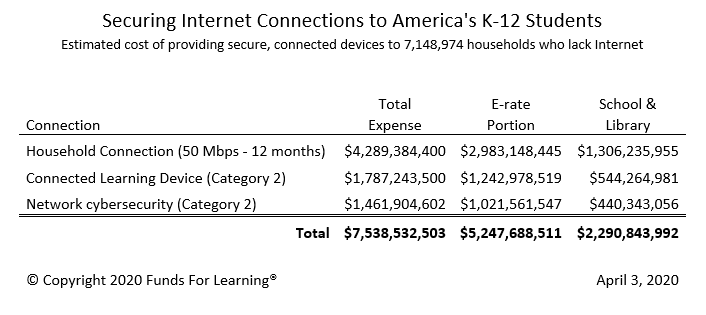
In July 2019, the Government Accounting Office (GAO) noted the high percentage of families who lacked Internet access and urged the FCC to consider allowing support for off-campus Internet access for students . The GAO estimated that 48% of households with annual income less than $25,000 lacked Internet and about half of those households (48%) could not afford it. The GAO also provided percentages for households with higher annual incomes.
Combined with the most recent data from the National Center of Education Statistics for the number of family households in America, Funds For Learning estimates that there are 25,354,276 family households without Internet access. Of those, 7,148,974 cannot afford it.
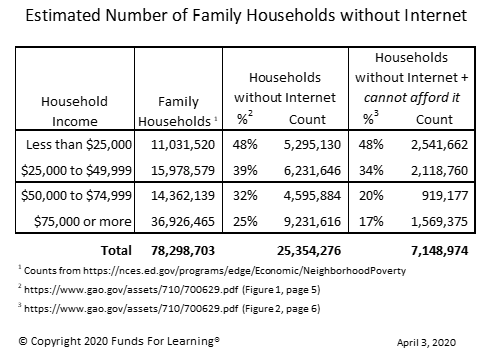
Assuming an average monthly cost of $50 per household, the total annual fee to connect every home that cannot afford Internet would be $4,289,384,400. This would cover students and teachers who currently lack a connection.
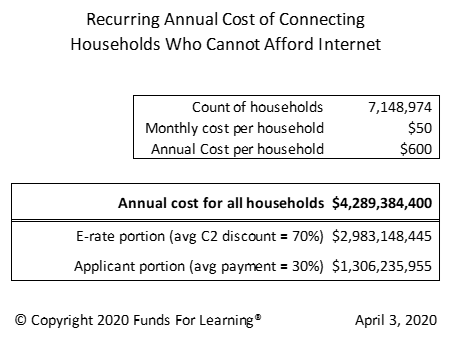
Assuming an average cost of $250 per device, and one device per household, the total one-time cost for connected learning devices is $1,787,243,500. The E-rate portion of this would be $1,242,978,519.
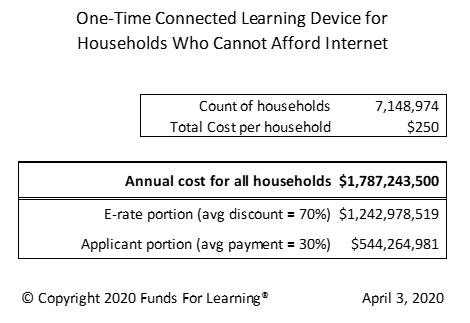
CALCULATING THE COST OF CYBERSECURITY
Funds For Learning has estimated the total cost to equip each K-12 school district and public library system with cybersecurity hardware and software. The total estimated cost is $1,461,904,602. The E-rate portion of this would be $1,021,561,547.
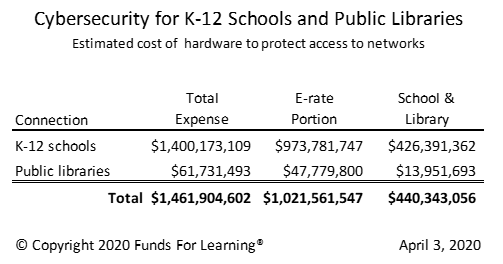
Cyber security costs are estimated on a per applicant and per user basis. It is assumed that each school district would purchase one system for a fixed cost amount plus a variable amount per user of the system. The fixed and variable costs would change based on the overall size of the school district or public library system. Below is the cost model used in our model.
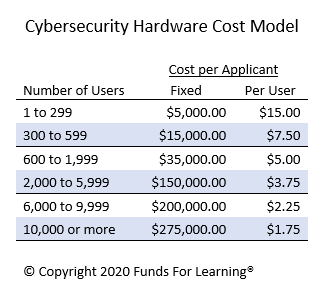
There are an estimated 57,317,557 students and staff that would be protected by these cybersecurity systems. Student counts are based on funding year 2019 enrollment reports. Staff counts are based on published NCES student-staff ratios which vary based on the enrollment size of a school.
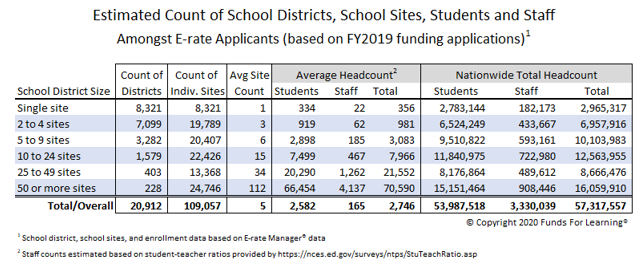
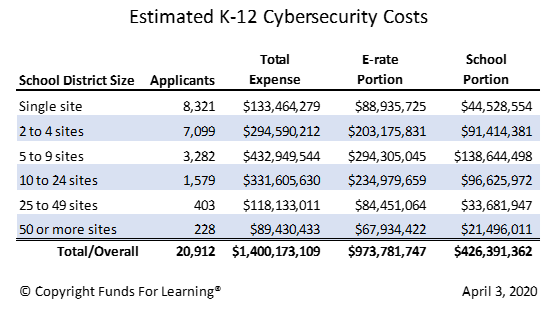
There are an estimated 3,308 library systems with 13,540 branches participating in the E-rate program today. Using average staff counts and daily visitor information from the 2017 IMLS Public Library Survey, it is estimated that there are 1,370,726 daily users supported by these libraries.
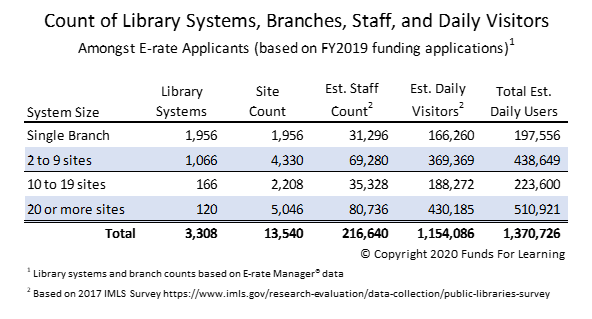
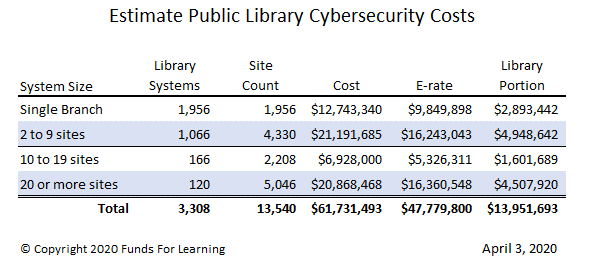
Congress would be wise to leverage the E-rate program. Here are a few of the reasons why:
- It is an established program with well-developed procedures and financials controls in place.
- Schools and libraries are already familiar with the E-rate program and would only need to learn about changes that might be made to it, rather than learning an entirely new system. This is analogous to the current Payroll Protection Program (PPP) that is being rolled out nationwide via the SBA, another existing program that is being retooled for the immediate need at hand.
- Schools and libraries are already at the frontline of connecting students and families who lack adequate home Internet. Because specific solutions vary from region-to-region, and even neighborhood-to-neighborhood, it is important to equip those who are closest to the situation with the resources that they need and the flexibility to use those resources in a way that makes the most sense for their community.
- The most economically disadvantaged communities receive more funding. The E-rate is a discount program. The highest discount rates are reserved for communities that serve the highest percentage of economically disadvantaged families. The E-rate discount matrix will ensure that a proportionately higher portion of the funds go where they are needed the most.
- The E-rate is a technology neutral program. This means that applicants may decide to deploy hotspots, Wi-Fi enabled buses, or any other type of solution that best serves their community.
- The additional financial support from Congress would be designated as Category 2 funds. These funds are subject to a spending cap, ensuring a mechanism exists to prioritize and curtail demand.
After Congress acts, the FCC would need to move quickly to allow schools and libraries to submit their funding requests. Below are a few of the specific technical details about how that process could work.
- The total FY2020 C2 budget available to schools and libraries would be increased proportionately by a total of $5.25 billion.
- The existing FCC Form 471 application process would be used to secure funding.
- The FCC Form 470 filing would be used to notify vendors of bidding opportunities; however, the FCC would waive its 28-day contract award period, deferring to state and local requirements for emergency procurement.
- A special filing window, like the process used for communities impacted by Hurricane Katrina, would be initiated in June 2020.
- The Form 470 requirement would be waived for any purchases made in March or April of 2020 and support would be retroactive for any goods and services purchased starting March 1, 2020.
- The E-rate eligible services list in 2020 would be revised to include end-user devices, off-campus Internet connections and equipment, and cybersecurity hardware.
